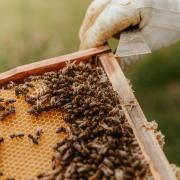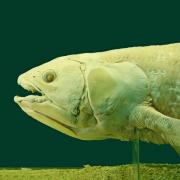
About 200 million years ago, the composition of earth’s atmosphere began to stabilise. When the carbon dioxide decreased in our atmosphere, and the proportion of oxygen increased, most of the species adapted to those anaerobic conditions became extinct; life as we now know started to emerge.
Today, with our industries and our way of life we are creating conditions that are essentially reversing this natural evolution process. With increasing awareness, comes the need to undo the damage and to find new ways of human existence that don’t necessarily spell doom for our planet.
Science and politics working in tandem is fundamental to the pursuit of a clean planet. But if we are to look upon laws and lawmakers to find a solution to the anthropogenic sources of pollution, it's easily decipherable that it’s going to be quite a nebulous state of affairs, with interconnected complexities, riddled with geographic, cultural and economic implications. Take the case of the capital city of India, New Delhi - During the months from October to December the Air Quality Index here spikes to hazardous levels. One of the major contributing factors is the farm-yard stubble burning in the northern states of the country. Here, the ‘Preservation of Subsoil Water Act of 2009’, decreased the span of time for agricultural activities, principally hindering the field preparation time between consecutive sowing sessions. The result is that the farmers resort to faster methods of clearing their fields in preparation for the ensuing crops.
While the world leaders navigate the dicey waters of policy making, it is quite obvious that it is up to science to surmount the hurdles to a clean planet. Here are some of the promising solutions proffered by science and technology.
Carbon nanotubes can be grown on membranes like silicon compounds, glass fibres and porous alumina ceramic surfaces. The result is a Carbon fibre composite material which is an excellent air and water filter with dramatically high specific surface area, facilitating efficient filtration while keeping air resistance low. These materials have shown 97.86% filtration rate for bacteria and have good water repellency; are flexible and are lightweight - making them ideal to be woven into masks and clothings. The electrical conductivity of Carbon nanotubes make it the preferred material for ‘active filtration’. Active filtration resorts to changing the properties of the particles that need to be filtered off. Thus rendering them much easier to capture and sieve out. This also means that low voltage treatments of the filter mats could be employed to inactivate the filtered pathogens thus prolonging the usability of the filter. Thermal stability of Carbon nanotube composite materials enable them to be easily cleaned and reused.
What this means in the current context is that - we could use this magic material to make face masks that are thinner and are a bit more aesthetically acceptable. While using these masks, we could be at peace, knowing that we are offered reasonably good protection from pathogens and humidity-induced filter failures. Above all, we do not have to be complicit in escalating pollution by discarding single-use masks.
In cities with high levels of air pollution, bigger filtration plants using this technology, could mitigate the health hazards. Dutch artist and designer Daan Roosegaarde is a pioneer in this field with his ‘Smog
Free Project’. Now, various pilot programs have been launched in countries like India and China. In 2019, a ‘Smog Eating Billboard’ was launched by the students at UDEM University, Mexico, in collaboration with Studio Roosegaarde. The bill board is designed to provide clean air for over a hundred thousand people, each day.
Another innovative idea in combating large scale air pollution comes in the form of curtains or claddings for buildings - that are based on live algae. The method relies on the power of algae to capture carbon dioxide and release fresh oxygen into the atmosphere. The algae can later be harvested to produce fertilisers, bio-plastics and other useful commodities. EcoLogic Studio is an urban design firm that specialises in buildings that are integrated with nature. ‘PhotoSyntheica’ is the name of their algae-based cladding system. ‘Bio-Curtains’ is the result of their collaboration with University College London and the University of Innsbruck, Austria.
The ‘Ocean Cleanup’ project is the brainchild of yet another Dutch inventor and entrepreneur, Boyan Slat. This initiative aims at removing the plastic from our oceans and rivers using cleverly designed massive floating nets. The key idea behind this project is that - oceans, by nature, tend to aggregate their non-degradable garbage in vast patches - thanks to the swirling oceanic currents, the ‘gyres’. 20 million square kilometre area of the Pacific Ocean - spanning from the West Coast of North America to Japan - form the North Pacific Subtropical Gyre. It is a gigantic combination of four different ocean currents that are rotating clockwise; Gathering enormous amounts of debris and eventually trapping it inside its stable centre. The Great Pacific Garbage Patch is not the only garbage patch in our ocean systems. But it is the biggest. Cleaning it up is a herculean task that calls for massive investments and audacious technological prowess.
Like most pilot programs, Ocean Cleanup is in the process of rectifying its technical glitches. In the meantime, Ceglinski and Turton, two enterprising Australians, have come up with the ‘Seabin Project’. The Seabin is a floating debris-interception device. When strategically positioned in the coastal marinas, it enables the wind and the currents to push the debris directly to the bin. A submersible water pump sucks in water from the surface and passes it through a catch bag. Apart from solid debris, Seabin has the potential to collect a percentage of oils and pollutants floating on the water surface, as well as microplastics. Today, several coastal marinas of the UK have installed Seabins. More than 300,000 kilograms of rubbish have to be cleared from the Thames each year. Seabins form part of the rigorous cleaning measures impelled by our increasing pollution levels; The idea is to address the problem of pollution closer to the source.
Then, there is the latest buzz in the design world, that is making entrepreneurs and business leaders rethink their old ways. It’s called ‘Circular Design’. Partners IDEO and the Ellen MacArthur Foundation believe this is our road map towards a circular economy, where products and services are restorative by design and by intention. The idea is aeons old. In fact it is the very foundation on which our planet exists and sustains life.
Nothing in nature is linear. Nature keeps her resources in use as long as possible then she reforms and reuses them. If this vision of Circular Design manifests into reality, we will have a future where we will not have to discard materials to landfills. We will be able to stop environmentally damaging processes for
extracting new raw materials. Architect Massimiliano Locatelli has devised a 3D printed housing solution to mitigate the growing housing crisis. The materials used in the construction of the house allow it to be demolished, processed and fed as raw material for new constructions. Eco Pixel, Bio Chair are all initiatives in Circular Design.
Better technologies will curtail the pervasive nature of pollution, but the long term solutions can only materialize through the principles of ‘Circular Design’ and our willingness to accept it as a way of life.



























